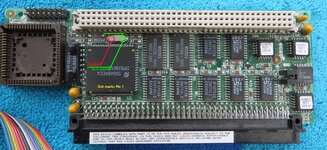Reasons.
Well-known member
So I received an older SE/30 with an Asante ethernet card in it recently. I got around to setting it up today, though, only to find that it doesn't work. All of the drivers are installed and all of the relevant software is configured correctly, but I can't get the thing to work. The card is detected by the machine, though (that's how the drivers got installed), and the light on the back works. However, it also fails every test I throw at it with Asante's troubleshooting tool. I know Occam's razor says that the thing is just broken, but I'd like to get a second opinion before I confine a potentially useful (and pricy) component to the bottom of a drawer somewhere.


